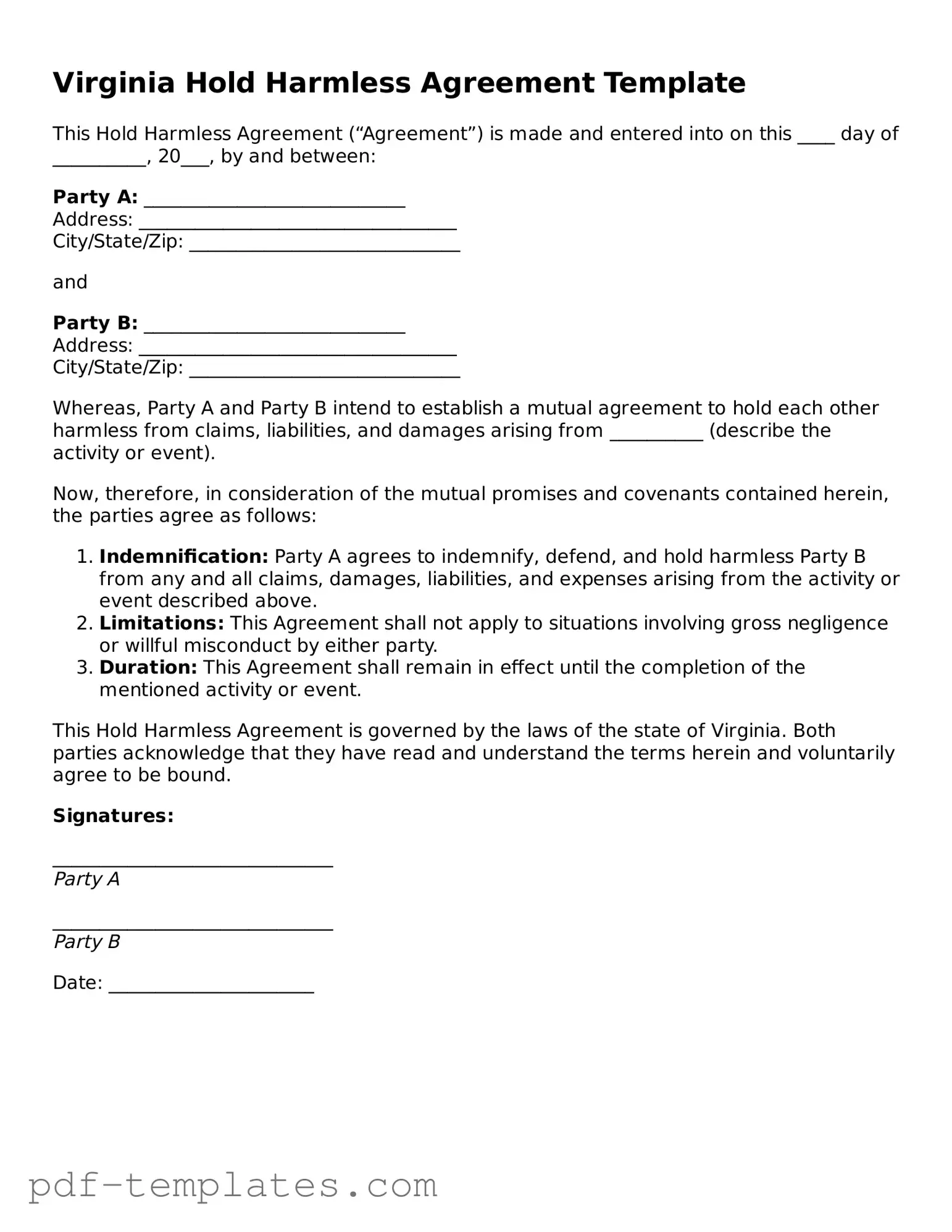The Waiver of Liability is a document that shares similarities with the Virginia Hold Harmless Agreement. Both documents aim to protect one party from legal claims or liability arising from specific activities. The Waiver of Liability often requires individuals to acknowledge the risks involved in an activity and agree not to hold the organization responsible for any injuries or damages that may occur. Like the Hold Harmless Agreement, this waiver is commonly used in recreational activities, sports events, and other situations where participants may face risks.
The Indemnity Agreement serves a similar purpose by transferring the financial responsibility for certain losses or damages from one party to another. In this case, one party agrees to compensate the other for any claims, damages, or losses that arise from specific actions or events. Both agreements protect parties from unforeseen liabilities, but the Indemnity Agreement often involves more detailed provisions regarding the extent of coverage and the obligations of each party.
The Release of Claims document is closely related to the Hold Harmless Agreement. It allows individuals to relinquish their right to pursue legal action against another party for specific incidents or actions. By signing a Release of Claims, individuals accept the risks associated with an activity and agree not to hold the other party accountable for any resulting harm. Like the Hold Harmless Agreement, this document is often used in contexts where participants may encounter risks, such as in sports or volunteer activities.
The Consent to Participate form is another document that shares features with the Hold Harmless Agreement. This form is typically used to inform participants about the risks associated with an activity and obtain their permission to participate. While it may not explicitly release one party from liability, it serves to ensure that participants are aware of potential dangers. Both documents emphasize the importance of informed consent and participant awareness in activities that carry inherent risks.
The Safety Agreement is designed to outline the responsibilities of each party in ensuring a safe environment during an activity. Similar to the Hold Harmless Agreement, it aims to minimize risks and protect parties from liability. While the Hold Harmless Agreement focuses on releasing one party from liability, the Safety Agreement emphasizes the mutual commitment to safety. This document may include specific safety protocols and guidelines that both parties agree to follow.
Lastly, the Participation Agreement can be likened to the Virginia Hold Harmless Agreement. This document outlines the terms and conditions under which individuals agree to participate in an activity. While it may include provisions regarding liability, it primarily focuses on the expectations and responsibilities of all parties involved. Both agreements seek to clarify the relationship between participants and organizers, helping to prevent misunderstandings and potential legal disputes.
